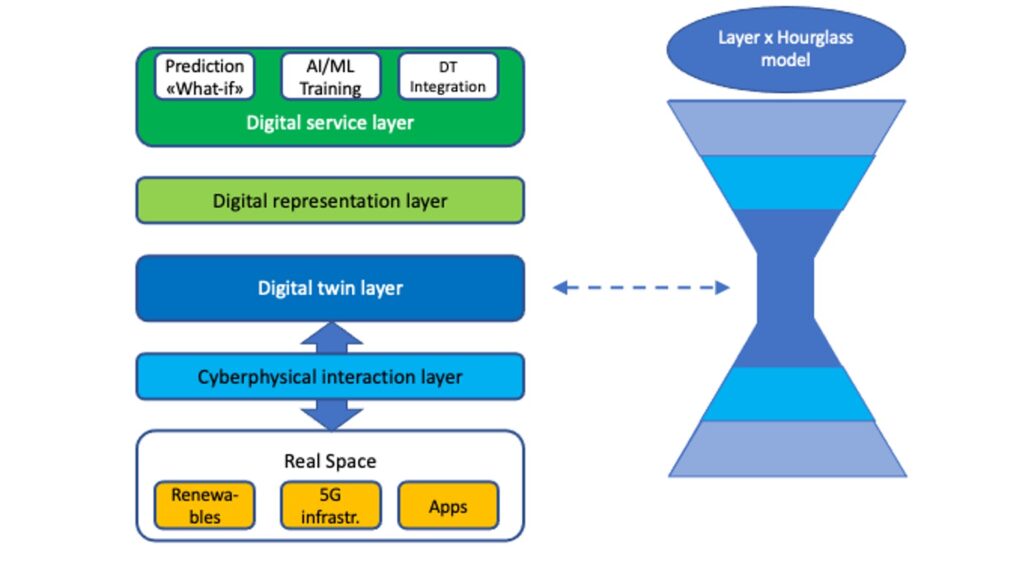Simulation, Emulation and the Digital Twin
The Good, the Bad and the Ugly in Network Performance Evaluation
by Fabrizio Granelli (CNIT, Italy)
Analyzing and predicting the performance of computer networks represents a hot issue from the very beginning of networks, back in the 60s. Fast forwarding to today, accurate performance evaluation is typically performed by means of simulation or emulation. Simulation is a technique whereby a software program replicates the behavior of a real network, in most cases using discrete event simulation and modeling of systems in which state variables change at discrete points in time. Emulation allows users to introduce real devices and applications into a test network that alters packet flow in such a way as to mimic the behavior of a live network. Live traffic can pass through the simulator and be affected by objects within the simulation.
However, most recently, an interesting alternative is represented by the Digital Twin. The Digital Twin is a digital (software) representation of a physical object, system or process that serves as an effectively indistinguishable digital counterpart of its Physical Twin for practical purposes, such as simulation, integration, testing, monitoring, and maintenance.
The most interesting aspect of the Digital Twin is that it is continuously connected to the Physical Twin by means of a communication channel (sometimes defined as Cyberphysical Interaction layer – see image below), that allows the Digital Twin to replicate the configuration and behaviour of the Physical Twin. This aspect is what makes the Digital Twin such an interesting technology in manufacturing, for example, since it allows to make predictions based on the current state of the actual Physical Twin and learn from the past operation. If you are interested in more detailed information on Digital Twins, please read this short article [1].
While the Digital Twin is very well known in specific areas, such as manufacturing, still it is taking its first steps in the world of networks. Indeed, I believe the Digital Twin is an extremely powerful tool in the hands of network designers and especially network managers. Indeed, the Digital Twin of a network allows to achieve an accurate representation of a production network. Thus, it is possible to perform any form of prediction or “what-if” scenario analysis on the Digital Twin of the network before taking a decision on how to operate on the Physical Twin.
As networks are becoming more complex and softwarized, network management is increasingly becoming a bottleneck in the network design process and a clear requirement towards autonomous and adaptive network operation is emerging. Autonomous or self-optimization requires the networks to implement a decision process, typically supported by Machine Learning or even Artificial Intelligence techniques. The network is required to analyze the state of network and services, identify the most appropriate actions to enable to reach the required KPIs and then take actions, while possibly learning from past decisions. Clearly, it is not feasible to train ML or AI algorithms on a network in production, since this will generate issues about stability and performance guarantees due to the temptatives of such algorithms to explore the space of solutions.
The availability of a Digital Twin of a network in production will provide a sandbox for training and exploring with different actions without impacting on the actual Physical Twin, which in my view provides a bright solution to integrate ML/AI in modern and future networks. The figure below provides a graphical representation of the conceptual Digital Twin ecosystem.

The HORSE project will explore the application of different Digital Twin concepts to make 6G mobile networks smart, efficient, secure and autonomous. Indeed, the Digital Twins will be used to perform predictions, to detect traffic anomalies and security threats, to improve security and resilience and to plan the network setup in the short, medium and long terms.
We are excited to share our findings with you and the scientific community. Please visit our website soon or follow us on social media for more information and details about our achievements.
